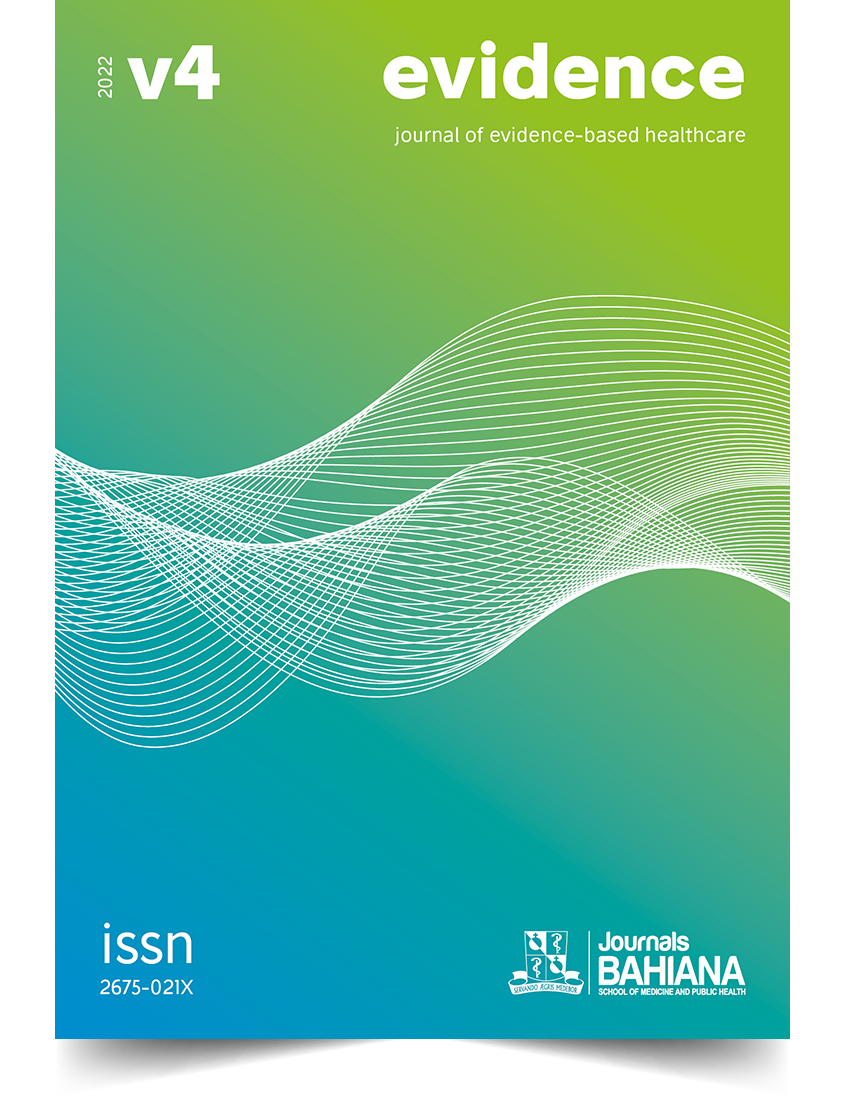Study protocol to compare the influence of the use of Contraceptive Injection in the levels of C Reactive Protein and Oxidized Low-density Lipoprotein
DOI:
https://doi.org/10.17267/2675-021Xevidence.2022.e3744Keywords:
Contraceptivo Injetável, Proteina C-reativa, Lipoproteína de Baixa Densidade - OxidadaAbstract
Introduction: Women broadly use hormonal contraceptives to avoid an unintended pregnancy. Nevertheless, researchers suggest that its continued use can cause adverse effects, as a variation in the lipid profile and levels of C-reactive Protein (CRP), which lead to subclinical inflammation and, consequently, higher cardiovascular risk. Objective: Test the hypothesis that the continuous use of contraceptive injection (CI) affects C-reactive Protein levels and Oxidized Low-density Lipoprotein of apparently healthy women. Methods: Comparative observational cross-sectional study, which will include women that have made (and have not made) use of contraceptive injection for at least six months. These women will be recruited by invitations on social networks, doctors’ offices, and health care units. There will be collected anthropometric and blood to analyze criteria for exclusion and blood collection to measure C-reactive Protein (CRP) and Oxidized Low-density Lipoprotein (Ox-LDL). The Term of Free and Informed Consent will be given to the volunteers. A pilot study was held with 14 participants, and the calculation of sample sufficiency was done for the primary outcome CRP, in which it was considered an alpha of 0,05 and beta 0,80 for the relationship between samples 1:1 and, then, the number of 82 participants had been estimated. The Project was submitted to the Committee of Ethics in Research with the Certificate of Presentation for Ethical Consideration (CPEC): 37695620.5.0000.0042.
Estimated Results: This study may suggest a redirection of health workers’ decision making, regarding the use of contraceptives in women with cardiovascular risk.
Downloads
References
Armstrong C. ACOG guidelines on noncontraceptive uses of hormonal contraceptives. Am Fam Physician [Internet]. 2010;82(3):288–95. Available from: http://journals.lww.com/greenjournal/toc/2010/01000
World Health Organization. Medical eligibility criteria for contraceptive use [Internet]. Geneva: WHO; 2015. Available from: https://www.who.int/publications/i/item/9789241549158
Panisset K, Giordano MV, Giordano LA. Contracepção injetável trimestral. Femina [Internet]. 2015;43(suppl 1):27–30. Available from: http://files.bvs.br/upload/S/0100-7254/2015/v43nsuppl1/a4852.pdf
Santos ACN, Petto J, Oliveira FTO, Diogo DP, Ladeia AMT. Proteína C Reativa em Usuárias de Contraceptivo Oral: Fatores Relacionados e Risco Cardiovascular. Int J Cardiovasc Sci [Internet]. 2016;29(4):320–5. Available from: http://www.onlineijcs.org/sumario/29/pdf/v29n4a10.pdf
Petto J, Pereira LS, Santos ACN, Giesta BA, Melo TA, ladeia AMT. Inflamação subclínica em mulheres que utilizam contraceptivo oral. Rev bras cardiol [Internet]. 2013;26(6):465–71. Available from: http://www.repositorio.bahiana.edu.br/jspui/handle/bahiana/184
Santos ACN, Petto J, Diogo DP, Seixas CR, Souza LH, Araújo WS, et al. Elevation of oxidized lipoprotein of low density in users of combined oral contraceptives. Arq Bras Cardiol. 2018;111(6):764–70. https://doi.org/10.5935/abc.20180194
Petto J, Vasques LMR, Pinheiro RL, Giesta BA, Santos ACN, Gomes Neto M, et al. Comparison of postprandial lipemia between women who are on oral contraceptive methods and those who are not. Arq Bras Cardiol. 2014;103(3):245–50. https://dx.doi.org/10.5935%2Fabc.20140080
Dianat S, Fox E, Ahrens KA, Upadhyay UD, Zlidar VM, Gallo MF, et al. Side Effects and Health Benefits of Depot Medroxyprogesterone Acetate: A Systematic Review. Obstet Gynecol. 2019;133(2):332–41. https://doi.org/10.1097/aog.0000000000003089
Downloads
Published
Issue
Section
License
Copyright (c) 2022 Daniell Lima Muniz, Priscilla Araujo dos Santos, Juliane Santos Barbosa, Josias Melo Leite, Jefferson Petto

This work is licensed under a Creative Commons Attribution 4.0 International License.
The authors retain copyrights, transferring to the Journal of Evidence-Based Healthcare only the right of first publication. This work is licensed under a Creative Commons Attribution 4.0 International License.



